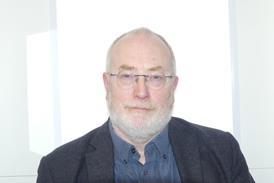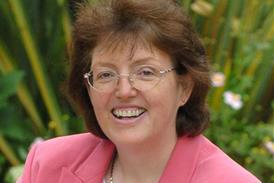Pippa Medcalf and Deborah Lee on how Gloucester is tackling the problem of healthcare for the homeless
Homelessness has increased by a staggering 169 per cent over the past seven years, mainly due to increasing rents from private landlords, relationship breakdown and to reduction in welfare benefits.
The homeless are five times more likely to attend hospital, stay three times longer and cost the NHS £85mn annually, eight times more, per patient, than those with secure housing. Secondary care can, and must, do more.
In Gloucester, an acute care physician has teamed up with the housing officer from the local Homeless Healthcare Team to tackle this problem.
The Department of Health and Social Care provided an initial start up grant of £34,000 which covered the costs of the full time housing officer and part time nurse from the Homeless Healthcare centre who linked with a volunteer acute care physician working in the acute medical admissions unit of Gloucestershire Royal Hospital.
Within the first year of the project from November 2013 to October 2014, 113 homeless people were referred to the team of whom 84 per cent were housed on discharge from hospital.
Before the project, not one homeless person was offered accommodation on discharge. There was a reduction in length of stay accounting for at least £50,000 cost saving to the trust.
Survey
Before the start of this project a survey was carried out on both homeless people and hospital staff.
The homeless people reported that they felt treated “like second class citizens”, that they were discharged from the hospital with no enquiry as to where they could go and that many of them ended up back on the street with some sleeping in the hospital outpatient department, the hospital church and in city parks.
The hospital staff reported that they felt helpless and unsupported in managing these people and, therefore, turned a blind eye to their problems; not because of a lack of compassion but because of a lack of resources.
Patients and staff embraced the new project and after one year the local clinical commissioning group agreed to continue funding the homeless housing officer and administration costs at £28,000 per year but were unable to fund a nurse.
Five years on, the housing officer and acute care physician continue to receive referrals and place homeless people on discharge.
The homeless housing officer is available from 9am to 5pm, five days each week but takes continuous messages on his mobile phone with the telephone number displayed on posters around the hospital. He attends to these the next working day.
The work has been recognised by the Royal College of Physicians and the Royal College of Emergency Medicine with a joint working party now setting standards for the management of homeless people across secondary care in England
His experience and expertise means he can contact local B&Bs, hostels and the council and whilst some of the accommodation may only be temporary and for a few nights, it does allow him to find time to find more appropriate places.
He continues to work with the patient and ensures all onward referrals are made such as to drug and alcohol services, the dentist, to the council for benefit advice and for longer term planning for appropriate placements.
He personally attends the hospital to see each individual to assess their needs and then personally escorts them on foot to their place of safety.
It is this latter touch which makes the project so successful, previous experience taught us that giving the homeless just contact details or telephone numbers was often not sufficient.
Subsequent surveys have shown enormous gratitude from both hospital staff and homeless people and the project has been embraced wholeheartedly throughout the hospital other than in the emergency department where the four hour breach rule has made access to services more difficult; work is ongoing here to support our ED.
Analysis of the follow up data of the first 100 referrals (66 per cent male, average age 45 years) shows that 60 per cent have remained housed and readmission rates are reduced. Four people have died which whilst terrible is a substantial reduction on the expected mortality.
One unexpected result was the finding that 10 per cent of the homeless referrals were over the age of 70 years.
This simple yet highly effective project has shown that the unique collaboration between primary and secondary care workers has been both cost-effective and improved standards of care for all involved immeasurably.
The work has been recognised by the Royal College of Physicians and the Royal College of Emergency Medicine with a joint working party now setting standards for the management of homeless people across secondary care in England.
Compassionate care and cost efficiency need not be mutually exclusive.






























No comments yet